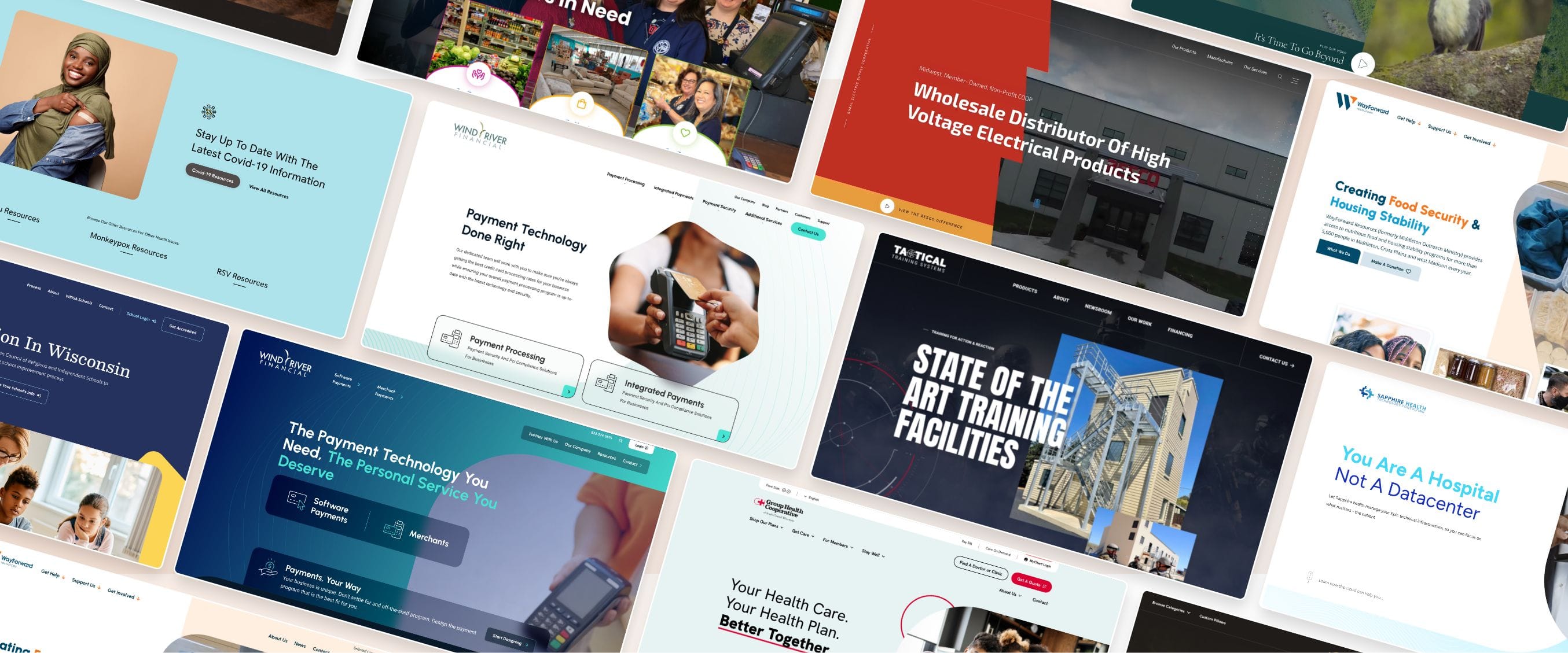Top Tips for Creating an Impactful Website Style That Transforms
To achieve this, one must take into consideration a range of aspects, consisting of recognizing the target audience, prioritizing user experience, and maximizing for mobile platforms. The strategic usage of compelling call-to-actions and a well-defined aesthetic pecking order plays an essential duty in assisting customers via their journey.

Understand Your Target Audience
Recognizing your target market is fundamental to effective internet site style, as it lays the groundwork for developing an appealing user experience. Recognizing who your customers are, including their demographics, preferences, and actions, makes it possible for designers to tailor the internet site's content, format, and capability to meet particular needs.
Conducting complete market study is critical in this procedure. Surveys, interviews, and analytics can give useful understandings into customer expectations and discomfort points. By compiling this information, designers can produce customer characters that stand for different sections of the target market, guaranteeing that design choices are educated and appropriate.
Moreover, understanding the target audience assists in picking suitable layout elements such as color plans, typography, and imagery that resonate with customers. A website that talks directly to its audience promotes a sense of link and trust fund, encouraging longer check outs and greater conversion prices.
Ultimately, a user-centered technique to web site style not just boosts customer contentment but likewise supports service purposes by driving involvement and loyalty. By prioritizing the requirements and preferences of the target market, a website can properly offer its purpose and achieve desired outcomes.
Prioritize User Experience
To improve the total effectiveness of a site, prioritizing user experience (UX) is crucial (Website Design). A well-designed UX guarantees that visitors can browse the site easily, locate information swiftly, and engage with material meaningfully. This brings about raised customer complete satisfaction and higher conversion rates
Begin by implementing intuitive navigation. Menus ought to be realistically structured, allowing individuals to find crucial areas of the site with marginal initiative. Uniformity in style elements, such as color schemes and font styles, promotes familiarity, which is critical for maintaining customer interaction.
Furthermore, consider the loading rate of your web site. A delay of simply a few secs can lead to considerable drop-offs, as customers are much less most likely to wait on a slow-loading page. Improving pictures and maximizing code can boost efficiency and keep site visitors.
By prioritizing individual experience, you not only produce an extra satisfying atmosphere for site visitors but additionally strengthen your brand name's integrity. Eventually, a focus on UX is a financial investment in the lasting success of your site.
Maximize for Mobile Instruments
Optimizing for mobile phones is essential in today's digital landscape, where a boosting variety of individuals accessibility websites with mobile phones and tablet computers. A mobile-friendly layout not only improves customer experience but also plays a significant function in boosting internet search engine positions. To attain this, it is necessary to take on a receptive style that immediately gets used to numerous display dimensions my latest blog post and orientations.

Filling rate is one more critical aspect; mobile customers are typically less person and expect rapid accessibility to info. Optimize pictures and take advantage of web browser caching to boost efficiency. Examination your site on several tools and screen resolutions to recognize and correct any kind of potential usability concerns. By prioritizing mobile optimization, you ensure that your internet site remains competitive and effectively engages a more comprehensive audience.
Use Compelling Call-to-Actions
An internet site's effectiveness frequently rests on its capability to assist site visitors towards desired actions, making compelling call-to-actions (CTAs) important components of style. CTAs work as the pivotal points that guide individuals to involve with the website, whether that means making a purchase, registering for a newsletter, or downloading and install a resource.
To create reliable CTAs, quality is go to this web-site critical. Usage concise language that clearly interacts the activity you want the user to take. Phrases such as "Begin," "Authorize Up Free," or "Shop Now" not just communicate necessity however also eliminate ambiguity. The placement of CTAs is just as vital; they need to be purposefully placed throughout the website to guarantee they are conveniently noticeable, particularly in high-traffic areas.
Furthermore, the design of CTAs must stick out without being meddlesome. Utilize contrasting colors and clear typefaces to ensure they capture interest. Additionally, consider utilizing directional hints, such as arrowheads or photos, to assist customers towards these switches. By concentrating on these aspects, companies can dramatically improve user involvement, driving conversions and ultimately attaining their site's goals.
Focus on Visual Power Structure
Efficient site layout relies greatly on a well-structured visual pecking order that overviews users with material perfectly. By arranging elements in a manner that focuses on details, designers can enhance user experience and help with decision-making. This includes making use of dimension, shade, comparison, and spacing strategically to accentuate the most critical components of a web page.
The use of bigger typefaces for headings and subheadings develops a clear distinction in between various areas, permitting individuals to scan content effortlessly. Furthermore, using contrasting colors for buttons and calls-to-action can catch customer focus and urge communication. Whitespace is article one more vital component; it avoids clutter and allows users to concentrate on key messages without interruptions.
Pictures and graphics need to complement the text while also adhering to the recognized hierarchy, reinforcing the overall message (Website Design). Consistency in layout components, such as color design and typography, additional strengthens the visual hierarchy, making navigating user-friendly

Verdict
Finally, reliable site layout necessitates a detailed understanding of the target market, prioritization of individual experience, and mobile optimization. The strategic use compelling call-to-actions and a distinct visual power structure further boosts customer engagement. By applying these principles, websites can attain higher conversion prices, guaranteeing that layout components not only draw in site visitors yet additionally help with smooth navigating and interaction. Ultimately, a well-executed internet site design offers as an essential component in driving customer activities and achieving service objectives.